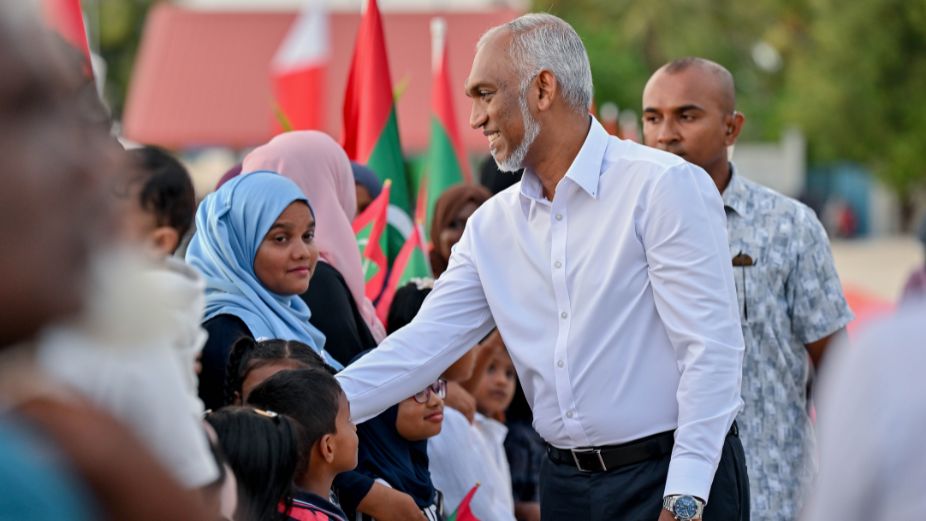
President Dr Mohamed Muizzu has called on all Maldivians to take full advantage of the Hiyaavehi financing scheme, describing it as a golden opportunity to secure housing and achieve homeownership. Speaking at a community meeting on Maamedhoo island during his tour of Huvadhu Atoll, the President emphasised that resolving the country’s housing challenges is one of his administration’s core objectives.
Highlighting the Administration’s commitment, President Muizzu reiterated that the Hiyaavehi scheme, alongside the Dhivehinge Raajje manifesto, aims to provide housing solutions for every Maldivian, regardless of location. He announced that MVR 1.5 billion had been earmarked for housing initiatives in this year’s budget, with plans to increase funding in the coming years.
The Hiyaavehi scheme was launched in November last year, following a promise made by the President during his Independence Day address. It includes a loan programme with a capped interest rate of five percent and offers tailored financing options to cater to diverse housing needs across the country.
What the Hiyaavehi Scheme Offers
The Hiyaavehi financing scheme aims to make housing more accessible by providing loans categorised into three tiers based on geographical location:
- Atolls: Loans of up to MVR 1 million through the Housing Development Finance Corporation (HDFC), with no equity required.
- Urban Centres: Loans of up to MVR 3 million available via the Bank of Maldives (BML) and Maldives Islamic Bank (MIB).
- Greater Malé Area: Loans of up to MVR 6 million also offered through BML and MIB.
Additionally, residents in Malé City are encouraged to merge smaller plots into larger ones, with an extra MVR 1 million in financing provided for each additional merged plot. Up to MVR 2 billion has been allocated annually for the scheme, and applications are processed via the Hiyaavehi Portal.
A Critical Look at Loan Categorisation
While the Hiyaavehi scheme is a step forward in addressing housing challenges, its reliance on location-based loan categorisation raises questions about whether it adequately addresses the diverse housing needs of Maldivians.
The higher loan amounts allocated to Malé reflect the higher construction costs in the capital, but this approach may overlook the unique challenges faced by families in other regions. For instance, residents on smaller islands often face higher material transportation costs or require specialised construction due to environmental factors.
Conversely, not all housing projects in Malé demand the maximum loan amount. A uniform categorisation system could lead to inefficiencies, with some applicants receiving more funds than necessary while others may struggle with inadequate financing. A case-by-case assessment might better ensure resources are distributed equitably and efficiently.
A Promising Start, but Room for Improvement
President Muizzu’s pledge that every Maldivian will have access to adequate housing solutions by the end of his term is ambitious and commendable. The Hiyaavehi scheme represents a significant investment in addressing the housing crisis, but its success will depend on how well it adapts to the varied realities faced by citizens across the country.
To truly achieve its goal, the scheme may benefit from more flexible criteria that account for individual project needs rather than relying solely on location. Doing so could ensure that every applicant receives support tailored to their specific circumstances, fostering greater satisfaction and long-term success for the initiative.
President Muizzu’s appeal for citizens to seize this opportunity reflects the Administration’s resolve to make housing accessible for all. However, refining the scheme to address these critical issues could strengthen its impact and ensure its sustainability.













